by Steve Selden | May 26, 2017 | Churchill Photography

Dorota Walkoski of Great White Bear Tours captured this harbinger of spring image in Churchill. Caribou, snow geese and Canada geese fill the landscape and feed on the bounty which the north provides this time of year! Bountiful Churchill summer will be upon us soon and avid explorers will flock to town for birding excursions, beluga whale charters and tundra exploring in search of fox, polar bears, Arctic hare and even wolves. This summer on the Hudson Bay is shaping up to be one of the most exciting in recent years. Stay posted for all the news and photos from the north!
by Steve Selden | Oct 21, 2016 | Churchill Photography
These awesome images from Churchill by Natural Habitat Adventures guide Drew Hamilton are some beauties. Healthy polar bears, an Arctic hare and an eager team of sled dogs are all signs that another dynamic polar bear season is underway in Churchill. Stay posted as the action heats up when temperatures cool down in the north country! Enjoy!

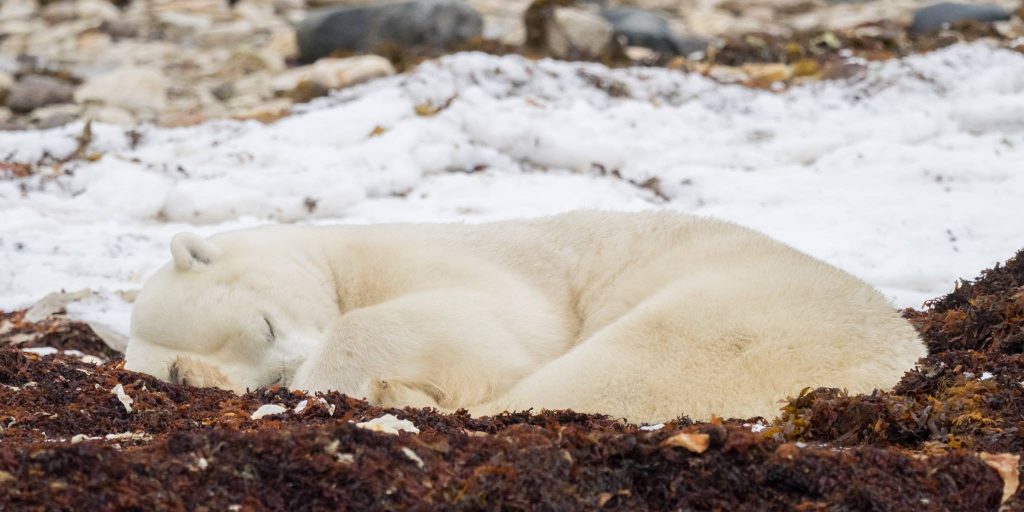

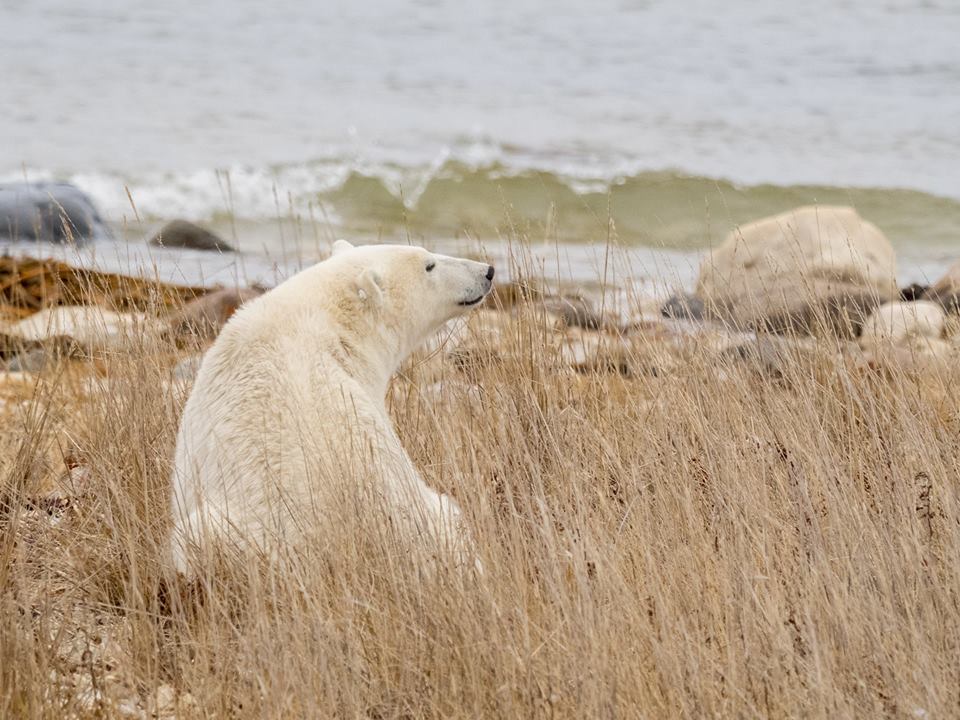
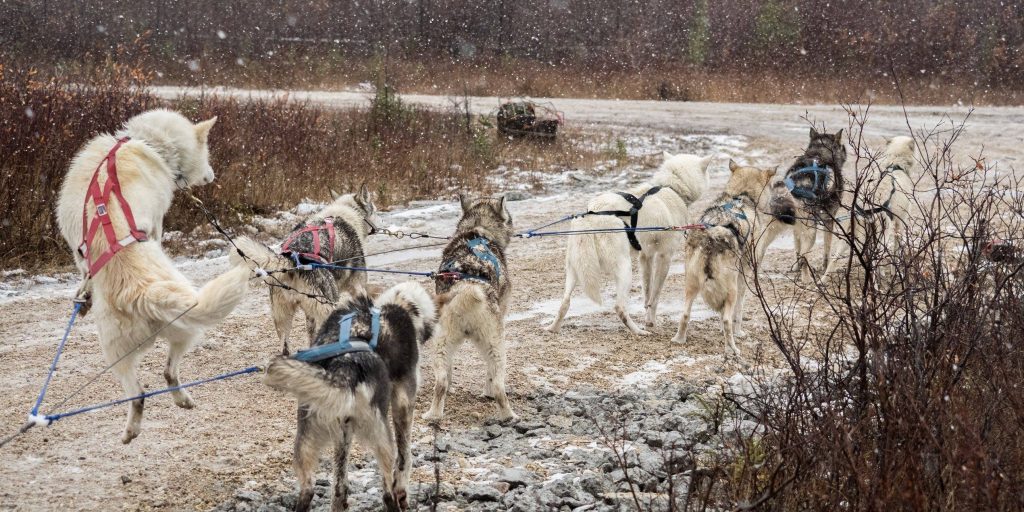

by Steve Selden | Nov 10, 2015 | Tour News
Amazing experiences have come from this polar bear season in Churchill, Manitoba for Natural Habitat Adventures guide Moira Le Patourel! “I am thoroughly enjoying my third season in Churchill and have been absolutely thrilled with the sights that have come my way while guiding the six-day and seven-day Classic adventures this season. My guests and I have been lucky enough to enjoy encounters with snowy owls, arctic fox, red fox, arctic hare and LOTS of incredible views of polar bears (and polar boulders too!).” reported Le Patourel.
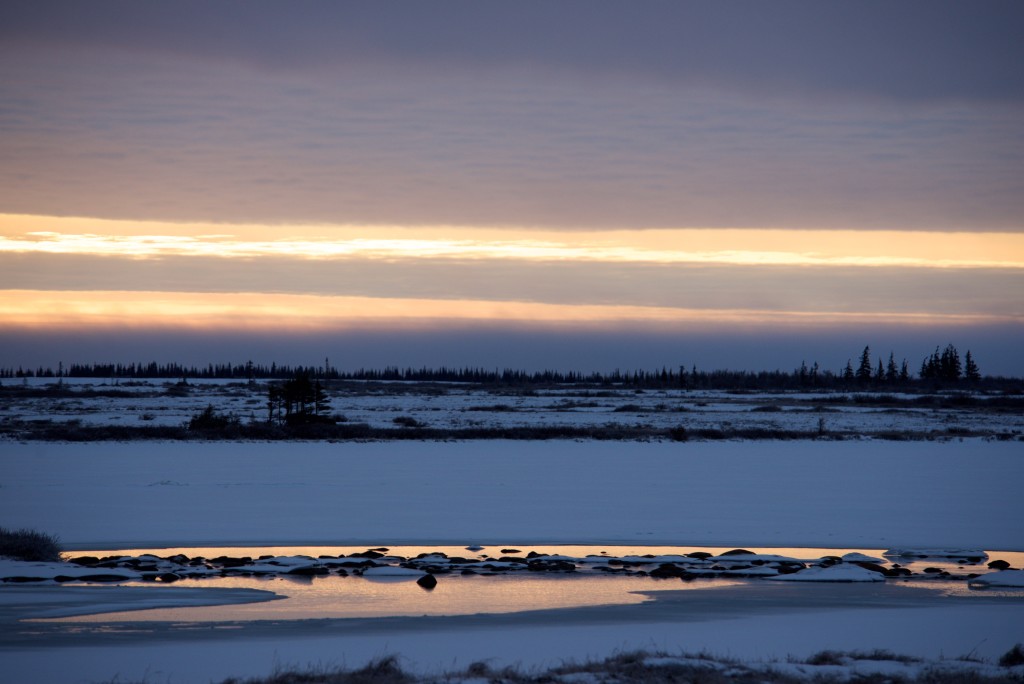
Magnifecent light over the tundra in Churchill. Moira Le Patourel photo.
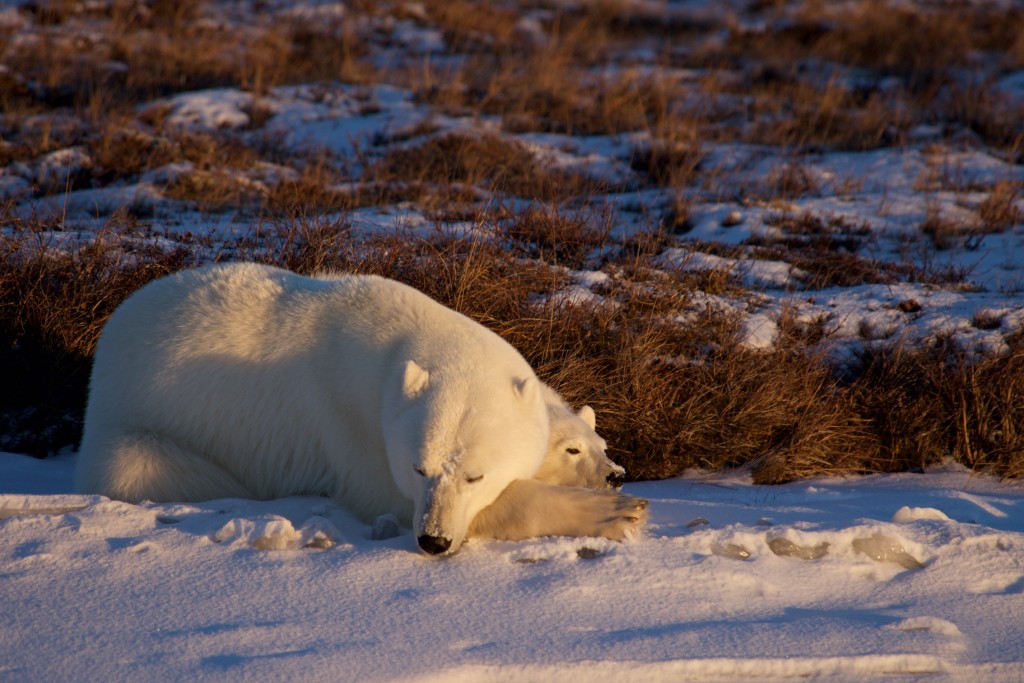
“One of my favourite moments of the season thus far was a late-in-the-day sighting of a female polar bear. She was spotted laying beside a frozen pond, along our road home. We were able to sit with her for a while, as the sun began to set on the tundra and on this beautiful bear. At first it seemed like only one adult bear was laying down, until a small black nose and a pair of ears poked out from behind. Smiles shone all around our Rover as we realized that we had the privilege of being in the presence of a mother polar bear and her cub of the year. The light faded slowly and all too soon we had to head home, leaving the mother and cub behind; our Rover crew silent in communal contentment, and smiling, appreciating all things polar bear.” stated Le Patourel.
As we come down the stretch of another
incredible polar bear season in Churchill, excitement is overflowing from guides and travelers as well. Fresh perspectives from guides in Churchill enable us all to see the polar bear world with a clear mind and vision.
by Steve Selden | May 13, 2015 | Conservation
Animals all over the Earth on land and within its oceans have evolved with some type of amazing camouflage or survival disguise in order to further exist in the wild. Many of these adaptations are intricate patterns or color shades that enable the living being to blend in with barely a trace of detection by predators.
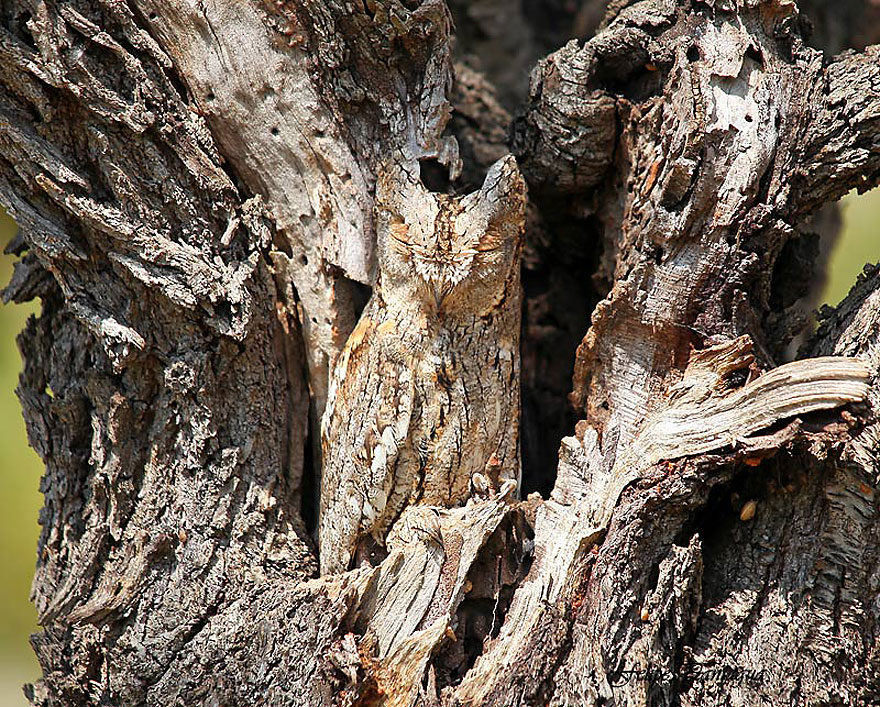
Owl blending perfectly in with a tree. Eoiarucasadvancedone.blogspot photo.
Camouflage in animals tends to adhere to three factors regarding environment. Blending in and becoming one with the environment is most common in nature. Behavior and physiology of the animal, relating to the behavior of the predator. And lastly, the environment in which the animal lives and hunts its food.
Since animal camouflage is genetically determined, each new generation adapts to it environmental features a little better. most animals mimic the habitat’s coloration and features and take on some representation in their appearance for disguise. Some species are able to change those features as needed through biological means. Chameleons obviously come to mind in this regard. Birds and some furred animals also adjust by shedding or molting and growing different colored coats seasonally.
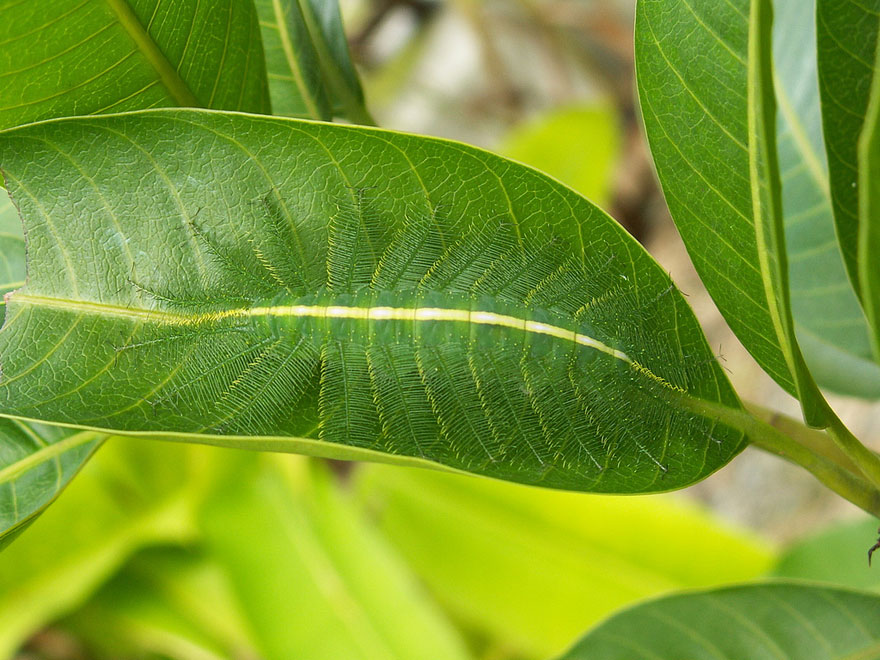
Common baron caterpillar blending into a leaf. Wohinauswandern photo.
Animals also use camouflage in groups or herds. Zebras blend their individual stripes together and appear as a larger mass to dissuade would be predators like lions. Tropical fish utilize this tactic as well by forming huge schools as protection. See kids… another reason to stay in school.

Polar bear using white to blend in. Natural Habitat Adventures photo.
Polar bears and Arctic animals use white as their camouflage. Polar bears are obviously a larger animal that has few predators besides humans. Therefore, blending in for them is a matter of disguising for predatory reasons. In essence, sneaking up on seals on white ice is the advantage gained. Other Arctic animals such as Arctic fox, Arctic hares, ptarmigan and beluga whales all need that white on white for protection from predators in the wild.

Willow ptarmigan becoming one with the snowy tundra. Art Wolfe photo.
by Steve Selden | Oct 27, 2014 | Conservation
Karen Walker’s Natural Habitat travelers arrived into Churchill on a VERY mild day this past week. The temperatures have been in the 30’s, with very little wind. While making a traditional orientation stop at the Inukshuk, the smell of sea kelp was persistent without the breezes off the Hudson Bay. The group ventured up to Cape Merry and comfortably spent a half hour at the battery enjoying the panoramic views and interesting natural history from Ranger Heather.

Exploring the precambrian sheild in Churchill. Karen Walker photo.
Later, as the group headed out on the launch road, they spotted an Arctic hare tucked into some spruce branches right next to the road. “We went out to the lodge and spotted three white slivers of bears off in the willow bushes. Two of them sparred in the willows, then moved toward the lodge” stated Karen. “One big guy sat right under the lodge windows looking up at the lodge, while the other two sparred by the propane tanks. We were parked at the end of the lodge, splitting half of the rover looking into the back of the lodge and half in the front. Once the polar bears settled down in the willows, dinner was served and the polar rover headed back to launch.

Frosty white polar bear on the tundra. Brad Josephs photo.
The following day five helicopters with 15 people lifted off in search of a polar bear den. Overcast with a very light wind….the contingent flew over the fort and up the Churchill River. A couple of the helis spotted harbor seals on the rocks just below the weir a short ways up the river. “Further up river we spotted some moose. Some helicopter passengers saw sows with calves, some spotted bulls” reported Karen. The group landed at Deer River to look at an abandoned bear den. Many of the travelers went inside and snapped a photo. The surrounding tundra was spongy and covered with caribou moss (lichen), crowberries, lowbush cranberries and the fragrant Labrador tea and even some red cranberries above the den. “I love the smell of the Labrador tea as you walk across the tundra.” stated karen. The larch/tamarack trees were losing their last needles. These trees are unique in that they are one of the only coniferous trees to lose their needles in the winter.
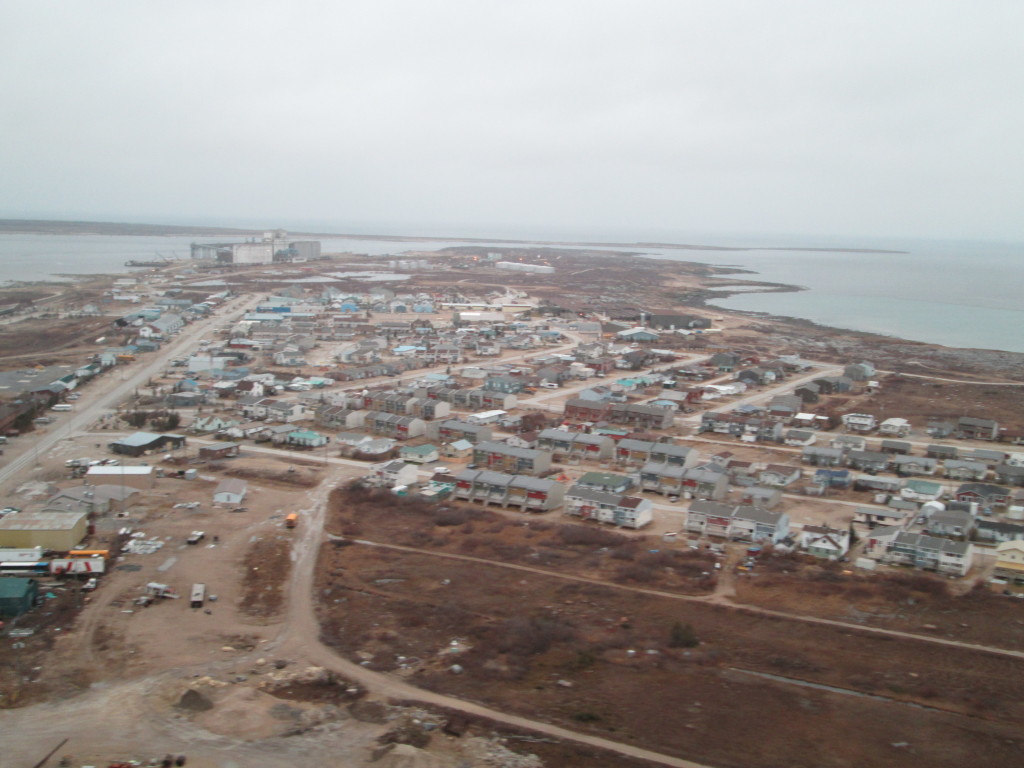
A birds eye view from the helicopter above Churchill. Karen walker photo.
The helicopters set off again flying across the wide open space, over the ponds and wetlands across Wapusk National Park. “We spotted many more moose in the forest -moms and calves, bulls, and bulls with cows nearby.” On the return journey back to Churchill the helicopters flew along the coast to look for polar bears. “We spotted innumerable bears along the coast, walking, standing, and laying in the kelp. In one group there were seven bears right near each other, and 15 bears within our view. We also spotted a couple of moms with cubs. We flew over the CWMA and the finally the Ithaca shipwreck and into Churchill.” What a trip!
As the group landed and entered the Hudson Bay Helicopter base office, Karen spotted a Conservation officer. She sensed that something might be happening shortly out at the Polar Bear Compound and she was right. The group hurried by shuttle out to the facility to see a mom with two, two-year-old cubs lifted by net up the coast of Hudson Bay. “It was pretty exciting for the guests that had just ridden in that helicopter to see it used for the bear lift” offered Karen.

Conservation officers prepare an animal for a bear lift. Karen walker photo.
The group headed over to Kelly Turcotte’s Churchill River Mushing for an afternoon of dog mushing. Kelly provided interesting information on the dog hierarchy and expenses to feed dogs up in the north, then the guests went out to meet the dogs. It was “warm” out, so there was a lot of mud in the dog yard and many guests came back with muddy foot prints on their Natural Habitat parkas. After the bumpy and fun ride on the cart-sleds Kelly spoke about a bear that was nosing around his dog yard earlier this season. Conservation officers tranquilized the bear and took him away to the compound.
On the way back into town, the group stopped at the Dene Village monument and learned about the struggles of the Dene people through their government forced relocation. Winding along the RX Road, the travelers stopped to see the Canadian Eskimo Dogs that various owners hold in their kennel yards and then made a final stop at the Town of Churchill sign for a group photo. All in all an amazing trip so far in Churchill!


















